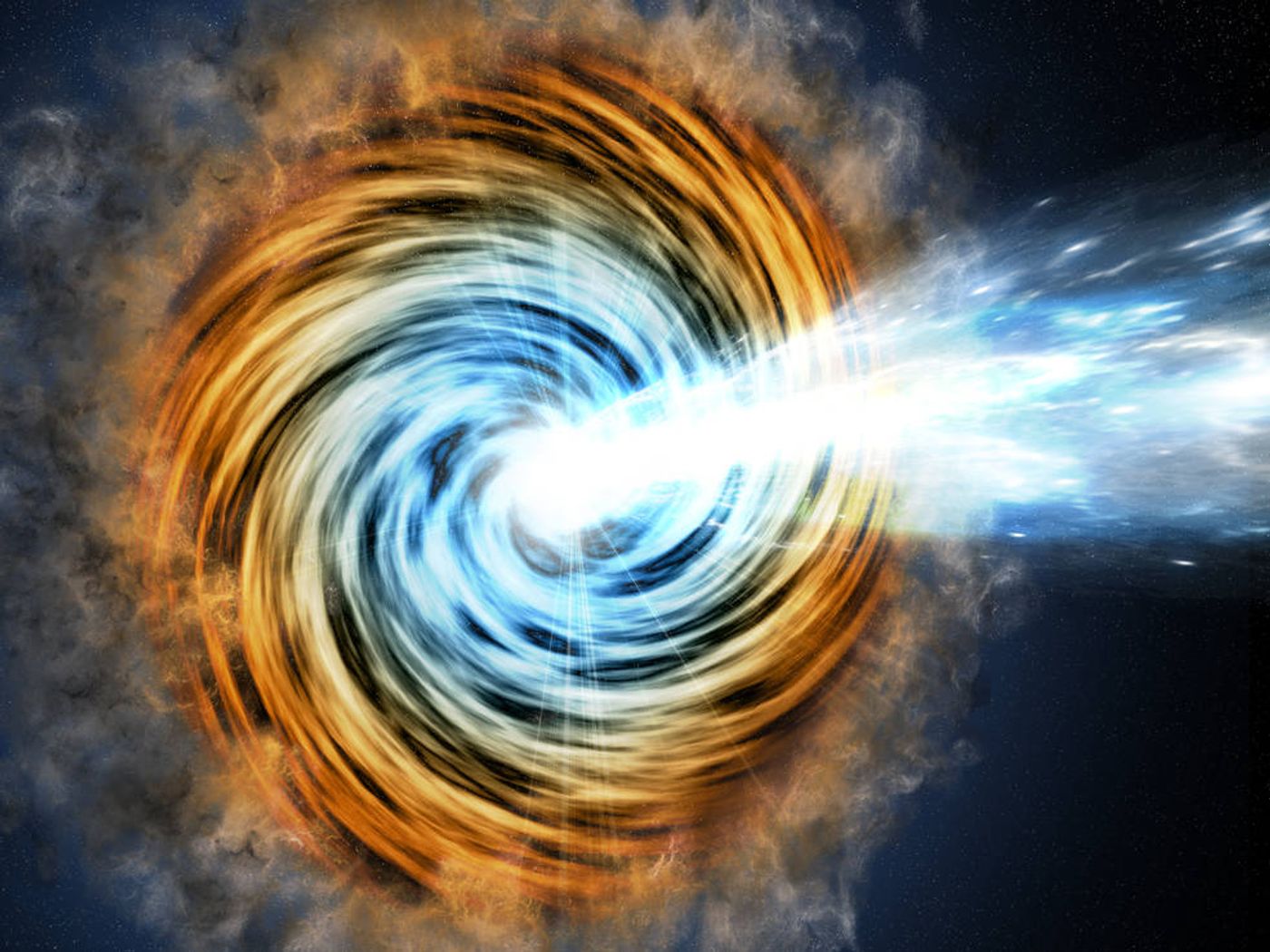Fermi Telescope Helps Astronomers Find Most Distant Blazars Yet
Among the many different kinds of things astronomers are looking for in the depths of space are blazars, which are essentially compact galaxies with active supermassive black holes at their core.
Image Credit: M. Weiss/CfA
Blazars are certainly interesting because they pack a lot of energy, but they’re still extremely mysterious because we don’t know that much about them. Nevertheless, astronomers say that they’ve discovered five of the most distant blazars ever discovered. The findings appear in The Astrophysical Journal.
According to NASA, the findings were made possible by the Fermi Gamma Ray Telescope, which found the blazars by picking up on their powerful gamma ray emissions. The light observed from the most distant one reportedly started its journey to Earth when the universe was a mere 1.4 billion years old or just 1/10th of the universe’s current age. This new number supersedes the previous record-breaker at 2.1 billion years old.
These supermassive black holes are among some of the largest ever found. At the cores of some of these newly-discovered blazars are supermassive black holes with masses of more than one-billion times that of our own Sun and are around two-trillion times more luminous than our Sun.
"Despite their youth, these far-flung blazars host some of the most massive black holes known," said Roopesh Ojha, an astronomer at NASA's Goddard Space Flight Center in Greenbelt, Maryland. "That they developed so early in cosmic history challenges current ideas of how supermassive black holes form and grow, and we want to find more of these objects to help us better understand the process."
Fermi tends to be very effective at finding distant gamma ray sources, and as it turns out, not too many space-based objects actually emit gamma rays; blazars are one of just a few; so few, in fact, that NASA estimates blazars give off around 50% of all gamma rays Fermi detects.
The high amounts of energy are predicted to be the result of super-heated material that compresses at the supermassive black hole’s accretion disk as it gets pulled into the black hole. When this happens, high-energy particle jets emit in either direction of the supermassive black hole at almost the speed of light, and when these jets happen to face the Earth, that’s when we are able to observe them.
While NASA says the team responsible for finding the blazars will continue to search for more, other aspiring minds are curious about what may have caused these supermassive black holes to form at such an early point in our universe. It seems there are still a lot of unanswered questions that some additional research could help to shed some light on.
-
APR 30, 2024Immuno-Oncology Virtual Event Series 2024
-
MAY 07, 20243rd International Biosecurity Virtual Symposium
-
SEP 03, 2024Microbiology Week Virtual Event Series 2024
- See More


















































